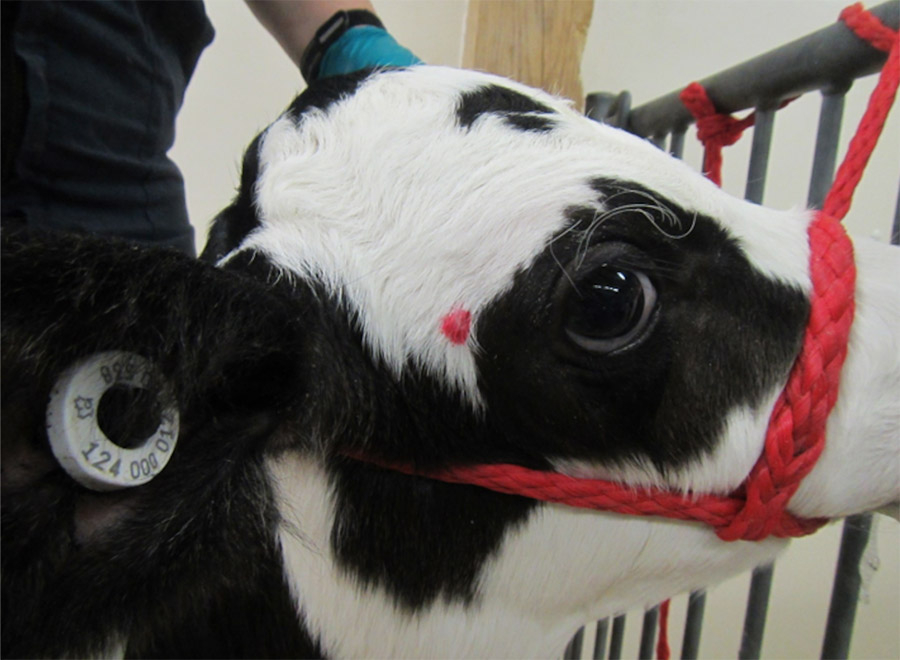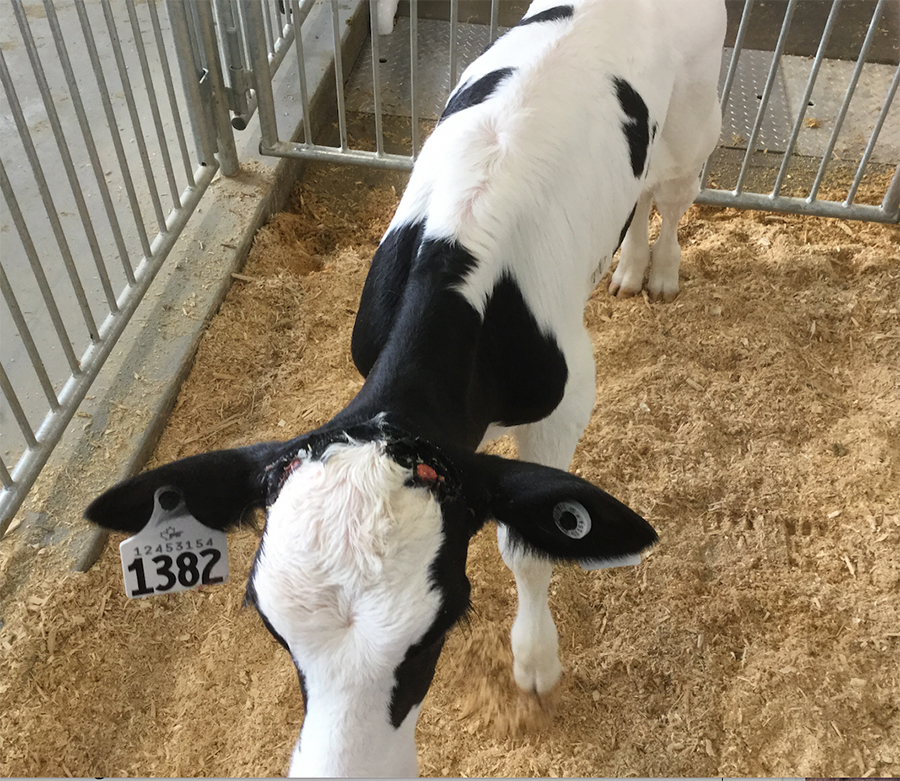Healthy Calf Conference
Follow to stay up-to-date on all Healthy Calf Conference updates. Speaker announcements, sponsorship information, registration announcements, and more.
By Dr. Charlotte Winder, University of Guelph
Disbudding can be a stressful procedure for everyone……..including the person! No one likes to see their calves in pain, and sometimes this task gets avoided if we aren’t using appropriate preventative strategies. Luckily, there are easy ways we can prevent pain and discomfort for all methods of disbudding calves. Best practices include the use of two medications: local anesthetic (freezing or numbing), and a non-steroidal anti-inflammatory drug (NSAID).

This is usually done using lidocaine, given as a cornual nerve block, which involves injecting a small amount of lidocaine (around 5 mL) at a point just behind the eye. This numbs the cornual nerve, which runs behind the eye and then branches out to provide sensation to the entire horn bud area. Similar to freezing you might receive for a dental procedure, it’s important that the lidocaine is injected in the right spot……otherwise, it won’t work! It’s also important to wait at least five minutes or more from giving the injection to allow the area to become completely desensitized – if you have a number of calves to disbud, going through them all to freeze them first, then coming back to disbud, is a great way to make sure they’ve all had enough time for the lidocaine to work.
Lidocaine works very well to completely numb the horn bud area, but wears off in a couple of hours. During that time, the body will have started to respond to the tissue damage with an inflammatory reaction. We know that calves experience inflammatory pain starting just a few hours after the procedure, and lasting for up to two days. Part of appropriate pain control for disbudding should include giving an NSAID at the time of the procedure. We know that calves getting an NSAID show substantially reduced pain indicators, such as head shaking, or biological markers of stress like blood cortisol levels, in the hours to days following disbudding, compared to calves given a local anesthetic alone. Similar to a visit to the dentist, when the numbing starts to wear off, that’s when you start to feel the inflammatory pain of your dental procedure!

The short answer is NO, appropriate pain control strategies are the same for both cautery (burning), and caustic paste. While caustic paste acts quite differently, taking much longer to achieve the same degree to tissue damage compared to burning, studies have shown that calves receiving local anesthetic and an NSAID have substantially reduced indicators of pain, and this should be considered best practice for all methods of disbudding. Even though the paste does not start to burn immediately upon application, and so there is no handling benefit of using local anesthetic since the calves don’t struggle, the local block will eliminate the acute pain that calves would start to feel once the paste starts damaging the tissue.
Disbudding can be done as early as you can reliably identify the horn buds. Pain control strategies should not differ based on calf age. While very young calves (i.e. one or two days old) may not appear to be as reactive as older ones, they still have a similar stress response to the procedure but may not be as able to demonstrate this behaviourally as well as an older calf. It’s also a good practice to not couple disbudding with other events such as weaning or moving. Making sure calves are disbudded a minimum of two weeks before they’re fully weaned helps ensure they gain well during this period.
If you are not using local anesthetic for disbudding, ask your herd veterinarian about learning how to do this. At a farm visit they can likely show you how to administer it. Once you’re comfortable with how to give the injection, it can be a quick and easy procedure. Alternatively, some farmers prefer to have their vet or a veterinary technician perform disbudding. If labour is in short supply, and if disbudding calves sometimes gets pretty far down the list of “to-do”s, this can be a labour-savings option and ensures disbudding is done on a regular basis with the appropriate pain control.
Note: Some markers that have been associated with the acute pain of disbudding include (and all these are dramatically reduced or eliminated with lidocaine provision):
Follow to stay up-to-date on all Healthy Calf Conference updates. Speaker announcements, sponsorship information, registration announcements, and more.
The Codes of Practice are nationally developed guidelines for the care and handling of farm animals. They serve as our national understanding of animal care requirements and recommended practices.